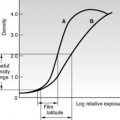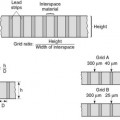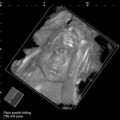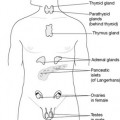Chapter 2 The law at work
 There are a number of acts of parliament and regulations that form the principal legislation of which you must be aware when working in a hospital.
There are a number of acts of parliament and regulations that form the principal legislation of which you must be aware when working in a hospital. Underpinning British health and safety law is the Health and Safety at Work etc. Act 1974, which sets out general duties for both the employer and the employee.
Underpinning British health and safety law is the Health and Safety at Work etc. Act 1974, which sets out general duties for both the employer and the employee. The Ionising Radiation Regulations 1999 and Ionising Radiation (Medical Exposure) Regulations 2000 are of particular interest.
The Ionising Radiation Regulations 1999 and Ionising Radiation (Medical Exposure) Regulations 2000 are of particular interest.THE HEALTH AND SAFETY AT WORK ETC. ACT 1974
The Health and Safety at Work etc. Act 1974 (HSWA) is the most important British health and safety law and is applicable to nearly every work activity. It is a huge document and its objective is to provide protection for people at work and for the general public. It does this by setting out general duties for both the employer and the employee. Failure to comply with these duties constitutes a criminal offence and both employers and employees can be prosecuted. It also provides the basis under which other health and safety regulations are enabled, the following of which are particularly relevant to radiographic work:
GENERAL DUTIES OF EMPLOYERS
Section 2(1) of the Act places a general duty on the employer:
To ensure so far as is reasonably practicable, the health, safety and welfare at work of all his employees1
To achieve this, the employer is required to:
GENERAL DUTIES OF EMPLOYEES
Employees have a number of duties and responsibilities. These include:
Sections 7 and 8 of the Act should be key to daily working practices. Section 7 of the Act states:
It shall be the duty of every employee while at work to take reasonable care for the health and safety of himself and of other persons who may be affected by his acts or omissions at work.1
No person shall intentionally or recklessly interfere with or misuse anything provided in the interests of health, safety or welfare in pursuance of any of the relevant statutory provisions.1
THE MANAGEMENT OF HEALTH AND SAFETY AT WORK REGULATIONS 1999
Under section 3 of these regulations, the employer is required to undertake ‘suitable and sufficient assessment of the risks to health and safety’ to which their employees are exposed while they are at work.2
THE IONISING RADIATIONS REGULATIONS 1999 (IRR99)
PART 1 INTERPRETATION AND GENERAL
The first section provides, amongst other things, definitions of terms such as ‘dose rate’.
PART III ARRANGEMENTS FOR THE MANAGEMENT OF RADIATION PROTECTION
PART V CLASSIFICATION AND MONITORING OF PERSONS
This section deals with classified workers who are defined as any employee who is ‘likely to receive an effective dose in excess of 6 mSv per year or an equivalent dose which exceeds three-tenths of any relevant dose limit’.3 It also covers dose assessment and recording, medical surveillance and requirements in the event of an overexposure.
PART VI ARRANGEMENTS FOR THE CONTROL OF RADIOACTIVE SUBSTANCES, ARTICLES AND EQUIPMENT
This section deals with radioactive materials, their storage and transport and the need for accurate record keeping. There is also a requirement to notify the HSE in the event of certain occurrences including the spillage of a radioactive substance, which would give rise to a ‘significant contamination’.3 It also deals with installation, maintenance and quality assurance of equipment used for medical imaging.
THE IONISING RADIATIONS (MEDICAL EXPOSURE) REGULATIONS 2000 [IR(ME)R]
These regulations deal with the safe and effective use of ionising radiation used in clinical practice and they underpin all medical exposures.4 They are policed by the Department of Health. It is essential that you are completely familiar with these regulations.
IR(ME)R DUTY HOLDERS
There are four identified duty holders, whose responsibility it is to enforce these regulations:
The employer
The employer also has to establish:
Stay updated, free articles. Join our Telegram channel

Full access? Get Clinical Tree








